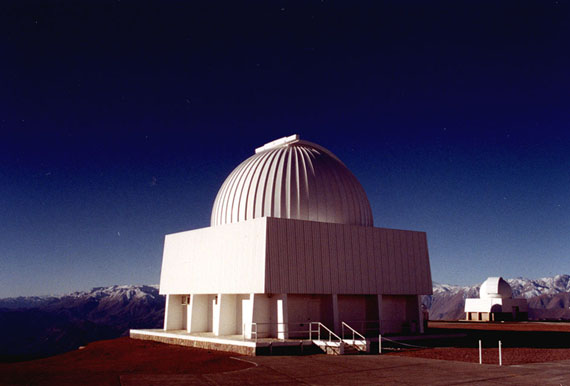
|
CTIO 0.9m: The Best Telescope in the World |
Brief History
The CTIO 0.9m was originally built in 1965 and was originally on Kitt Peak. In 1967 it was moved to CTIO when two new 38in telescopes were bought for Kitt Peak. (For anyone reading this, please do send Todd Henry more details about the history of the 0.9m and he'll do his best to incorporate it.)
Since (at least) 1999, the 0.9m has utilized a single instrument, an optical camera with a CCD detector that is 2048 pixels on a side. The scale of the CCD is 401 milliarcseconds/pixel, thereby providing a full field of 13.69 arcminutes, or about 46% the width of the full Moon. The stability of the instrument configuration permits long-term studies that are impossible to do on most telescopes, including one of the largest astrometric programs in the world.
The 0.9m dome, located at Cerro Tololo Inter-american Observatory (CTIO) in the foothills of the Chilean Andes.

|
These pictures were taken in 1967, when the when the 0.9m telescope was being installed on CTIO, and BEFORE THERE WAS ANY DOME. So, for several months the telescope was outside and was covered with a tarp in bad weather.
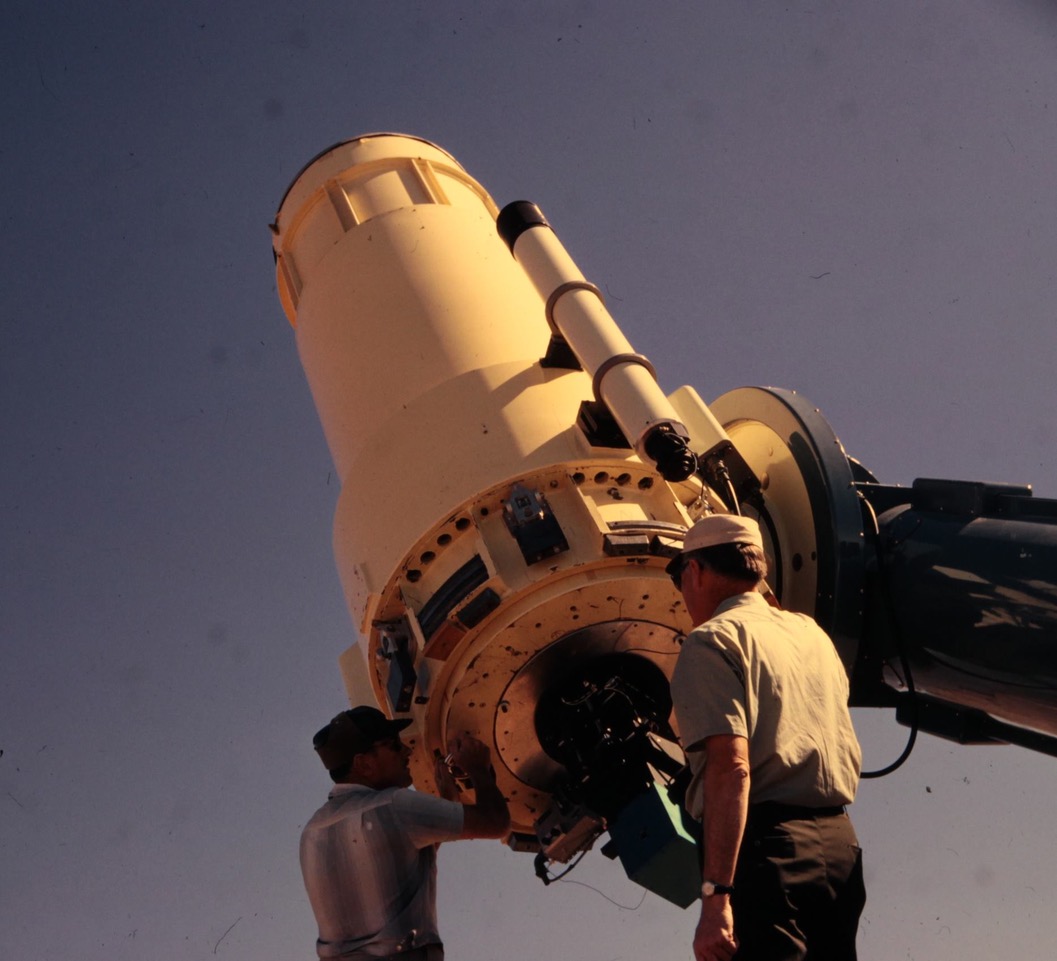
|
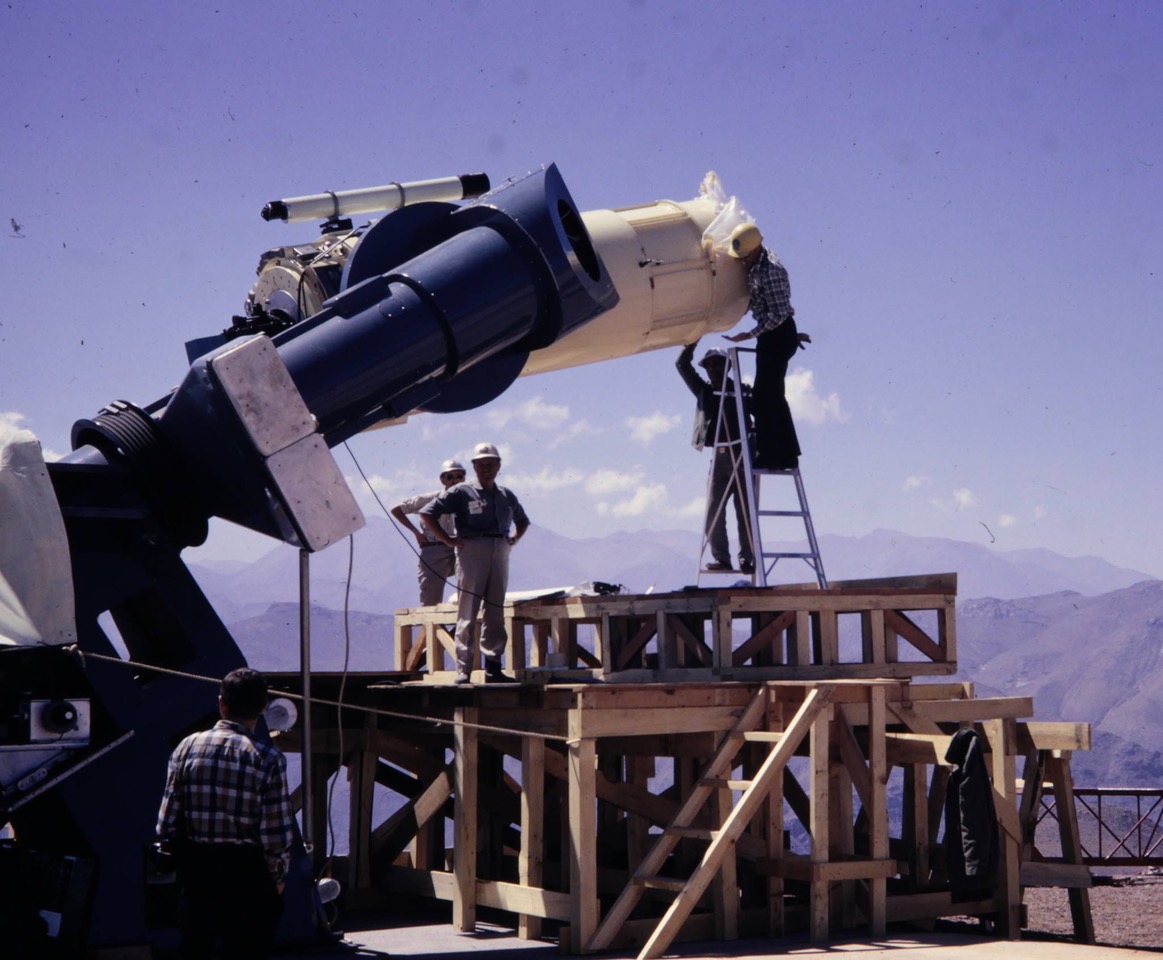
|
Constructed in 1965 by Boller & Chivens, the 0.9m is a closed tube design telescope, with instruments attached at the bottom at the Cassegrain focus.
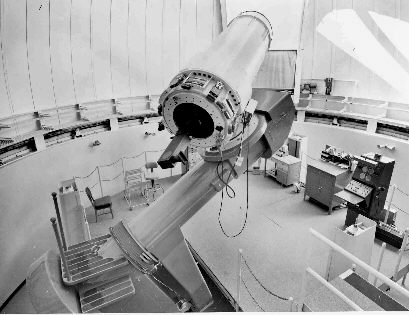
|
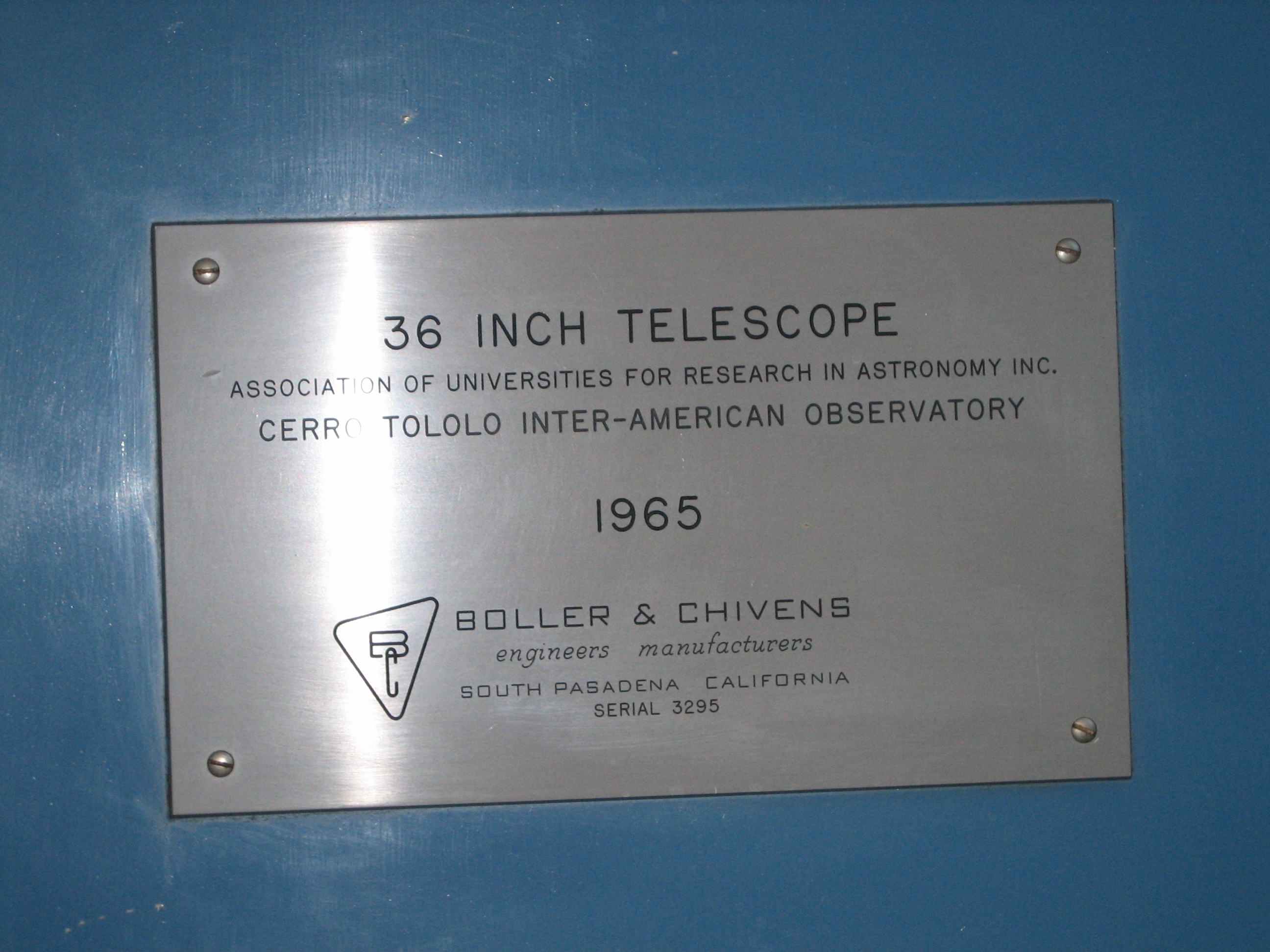
|
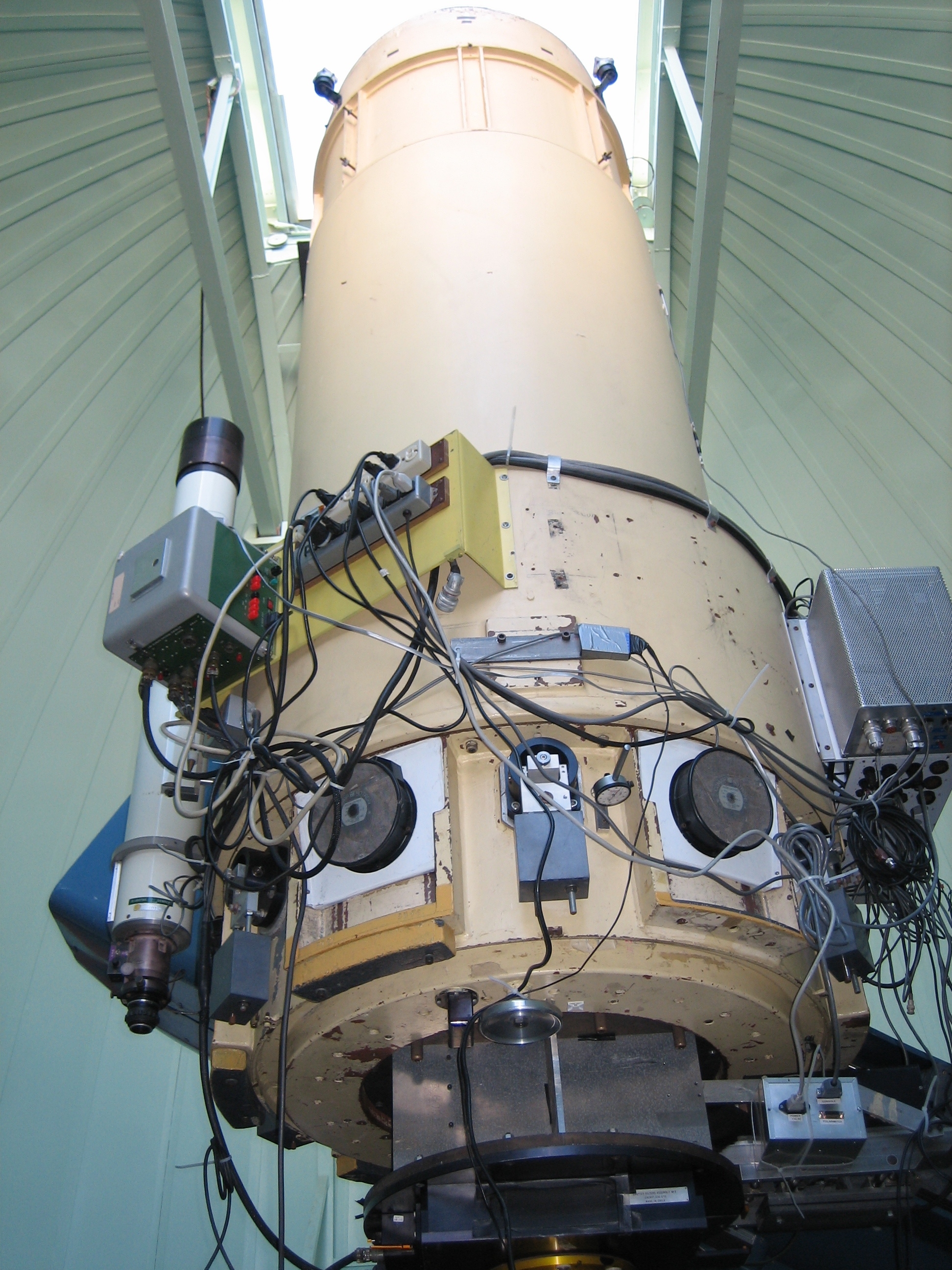
|
The 0.9 meter = 36 inch "eye" of the 0.9m can be seen, with its attendant secondary mirror support.
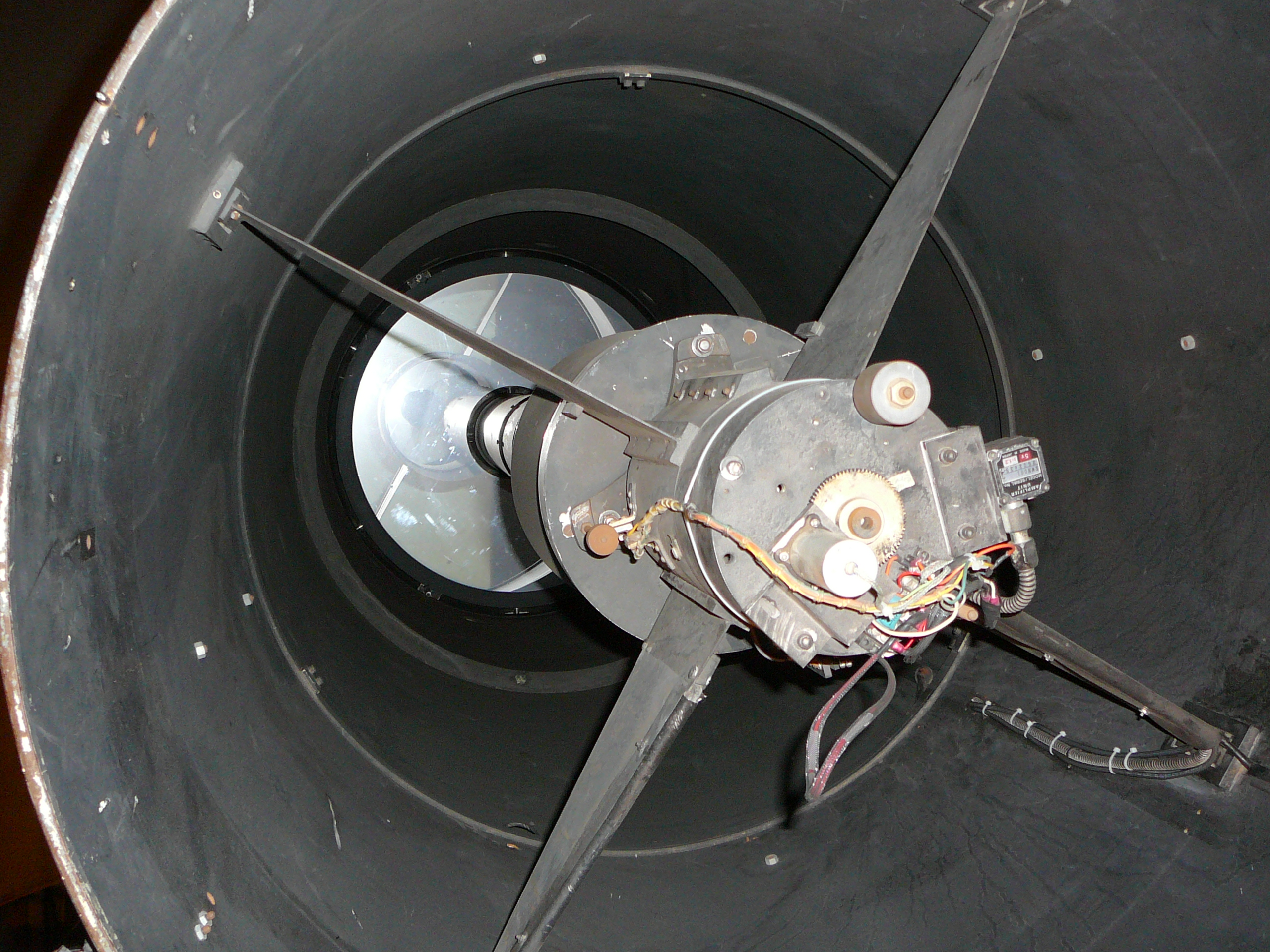
|
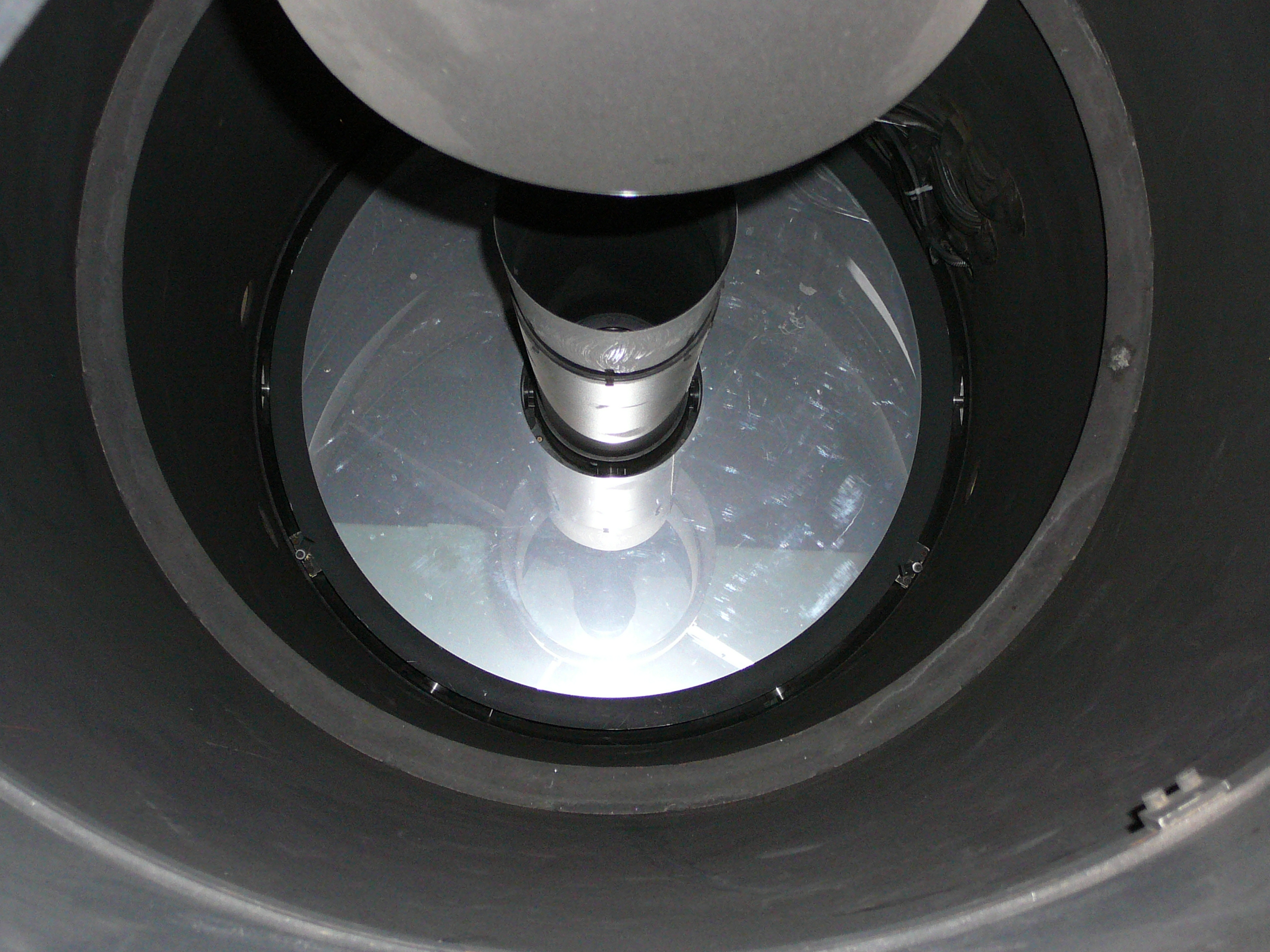
|
The golden dewar contains the CCD detector used for science observations. Electronics and filters are housed in the surrounding black, silver, and gold boxes. The dewar is filled with liquid nitrogen, which has a temperature of 77 Kelvin, in order to keep the "background" low on the detector. The background is comprised of electrons, which are also used to detect light on the detector. So, if fewer electrons are free because of a lower detector temperature, faint signals that generate few electrons in the detector can be better measured.
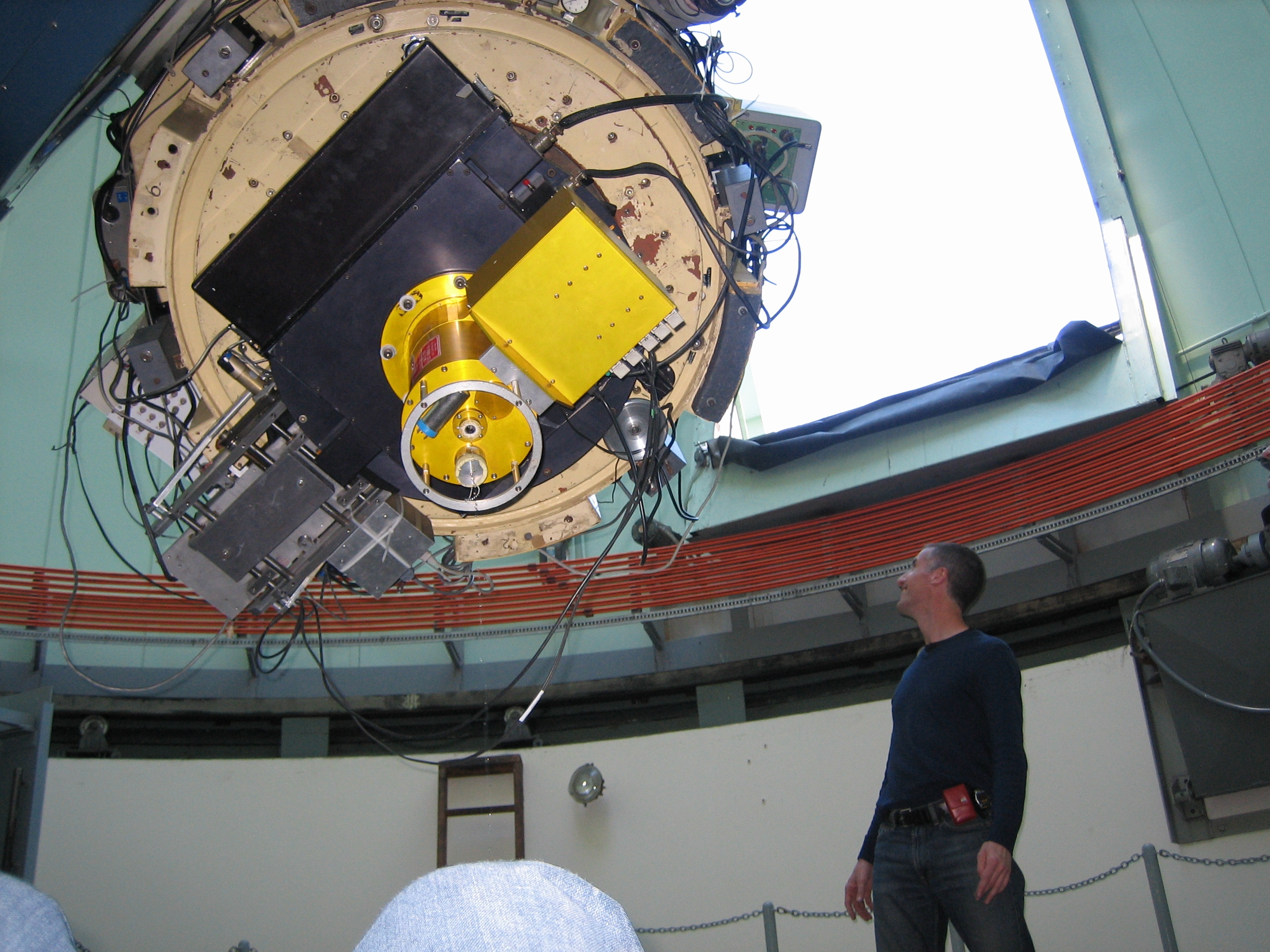
|
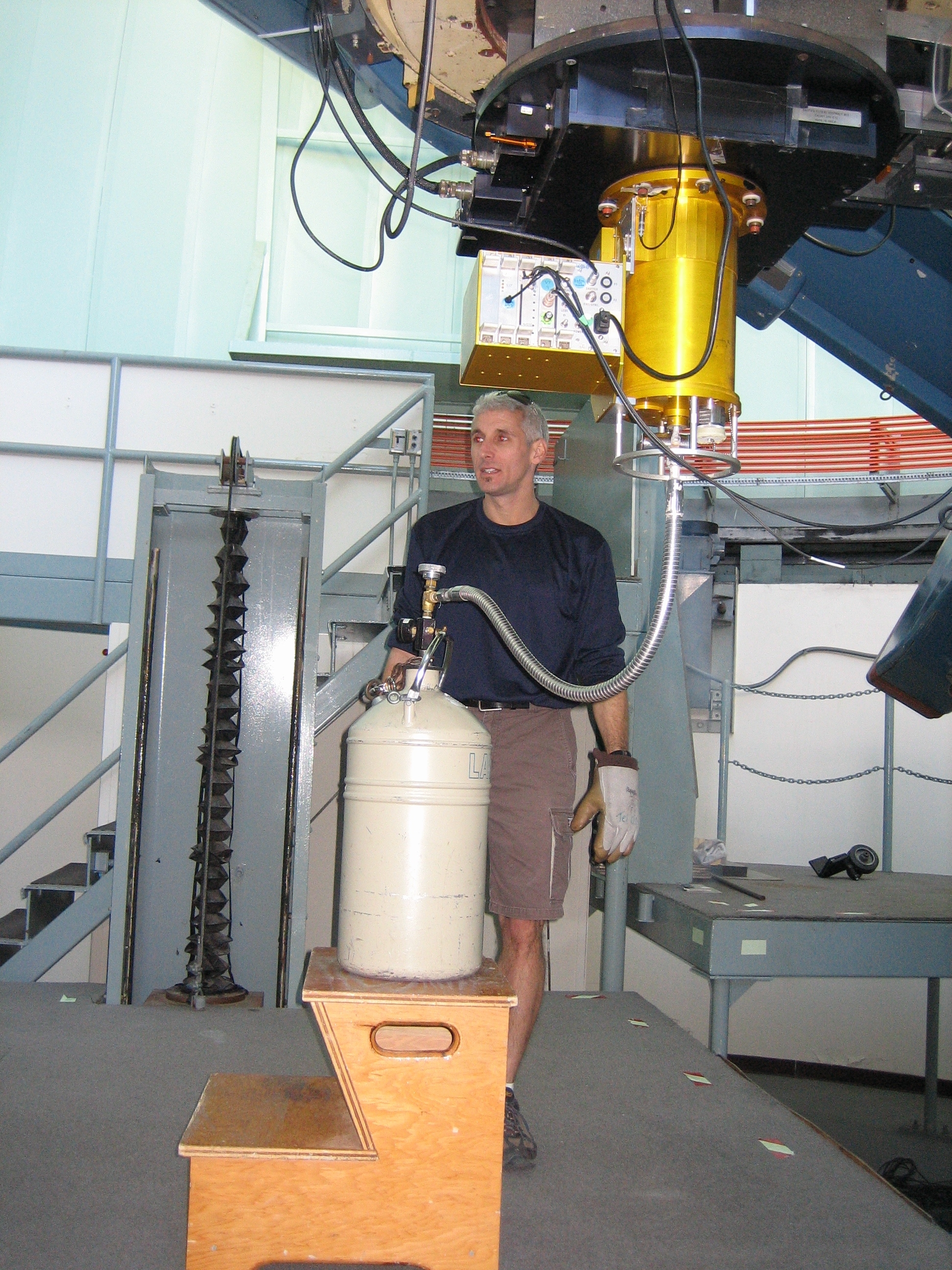
|
The CCD can be seen through the final optical element in the light path, the dewar window. Occasionally, the dewar is disconnected from the black box that holds filters and additional optics used to focus images onto the CCD, primarily to clean the window.
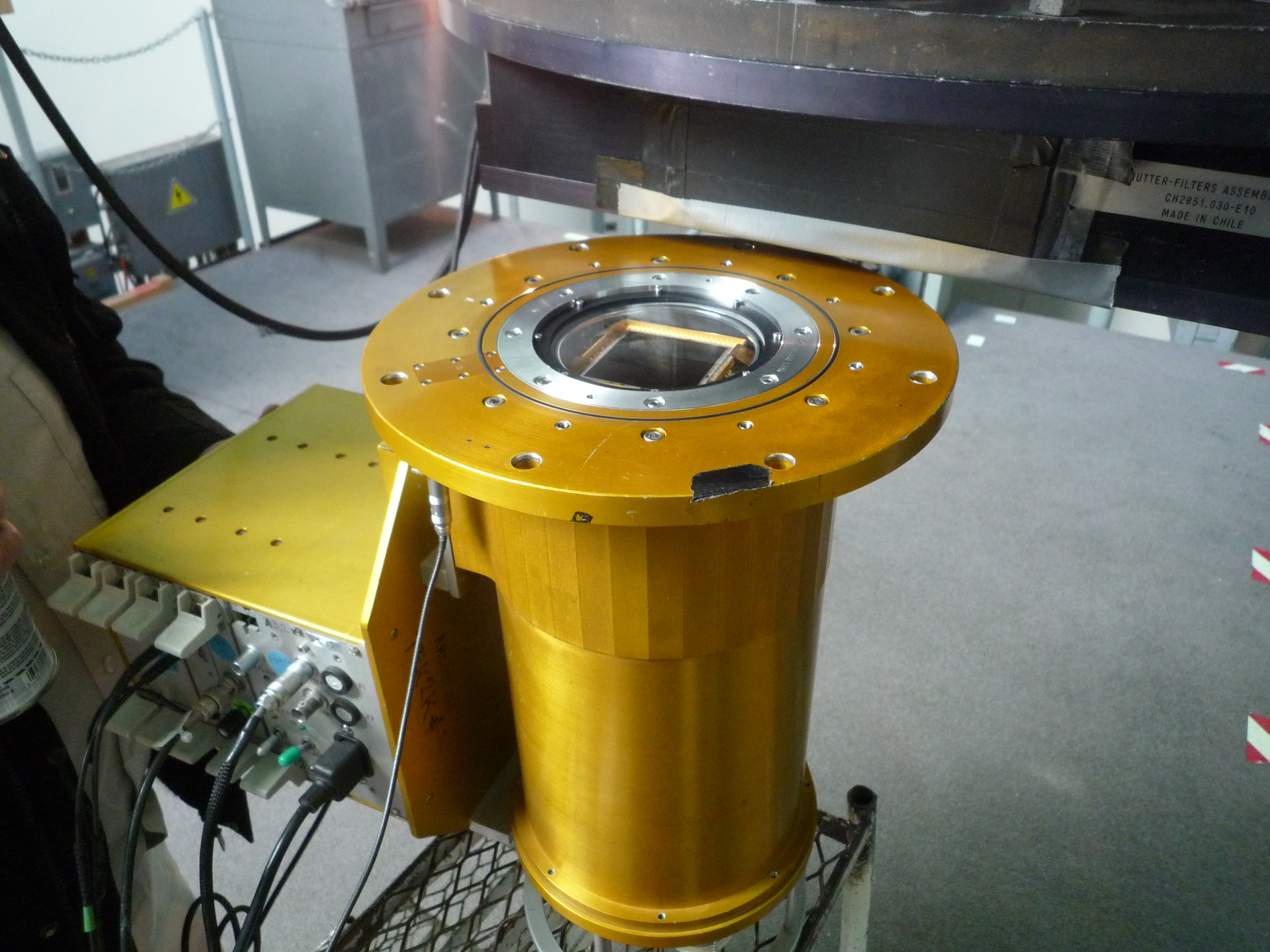
|
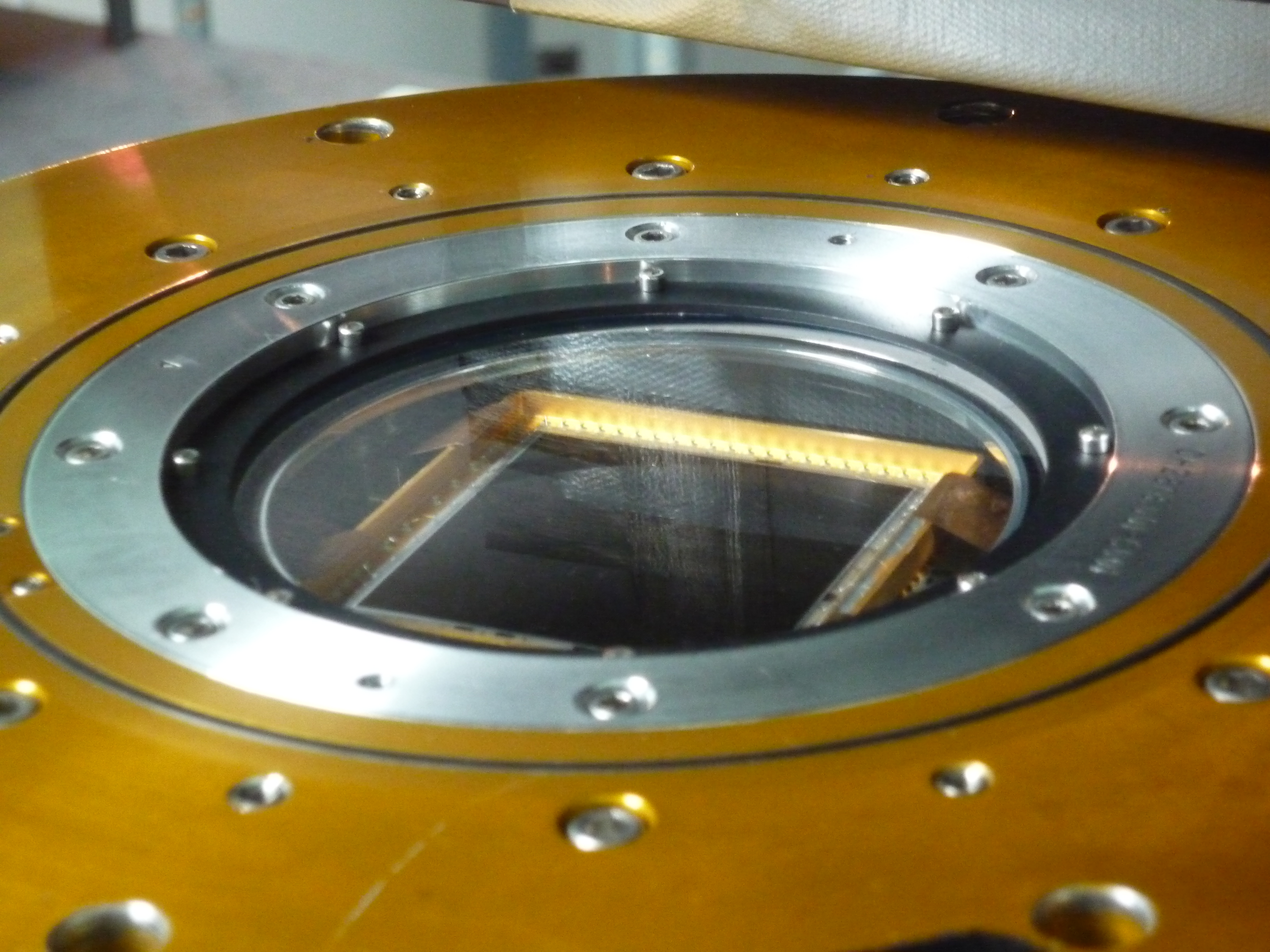
|
The observing room is cozy, with a new floor as of 2006. Universities using the 0.9m and involved in the SMARTS Consortium, which operates the 0.9m and three other telescopes at CTIO, are always present in spirit.
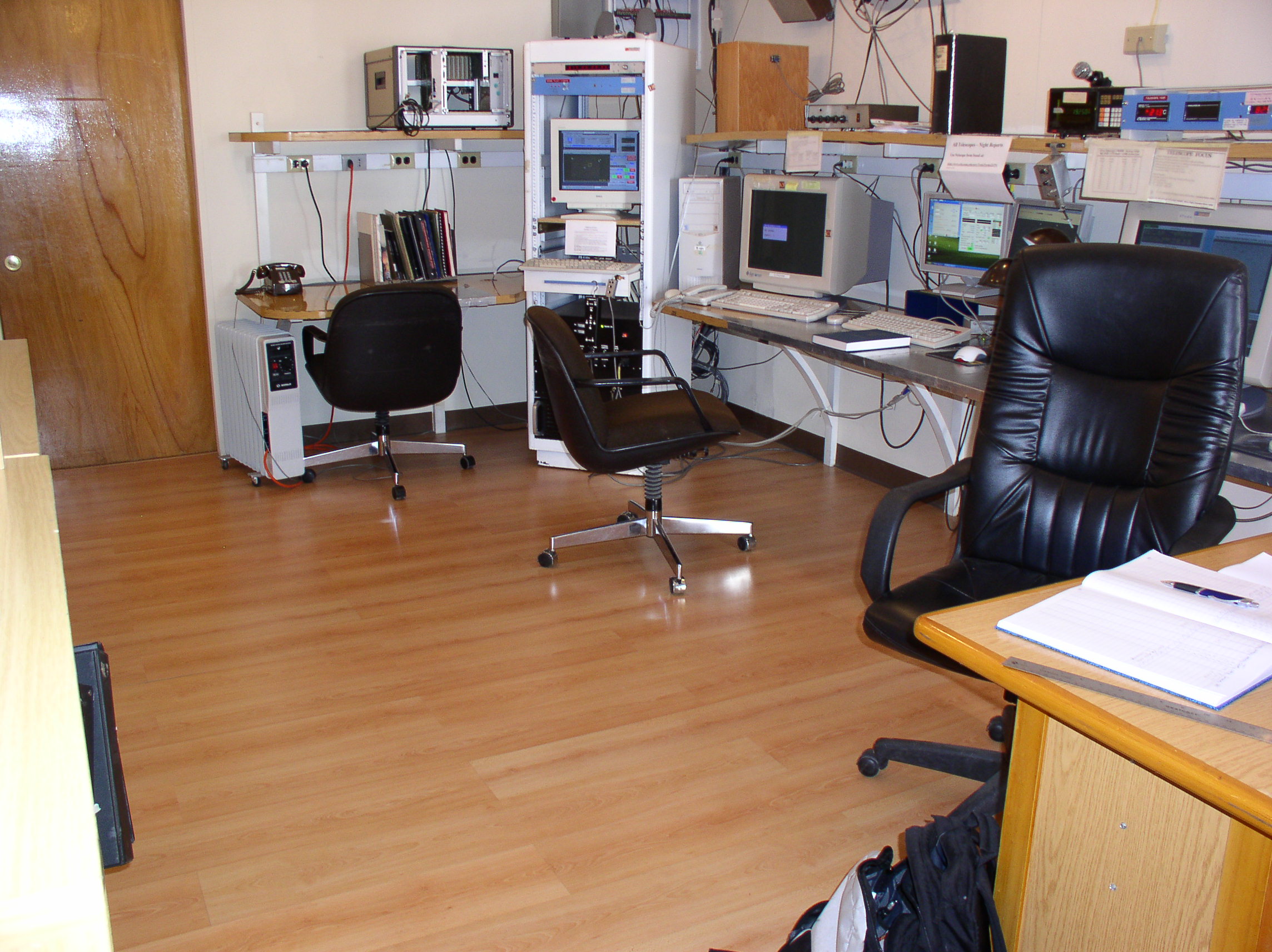
|
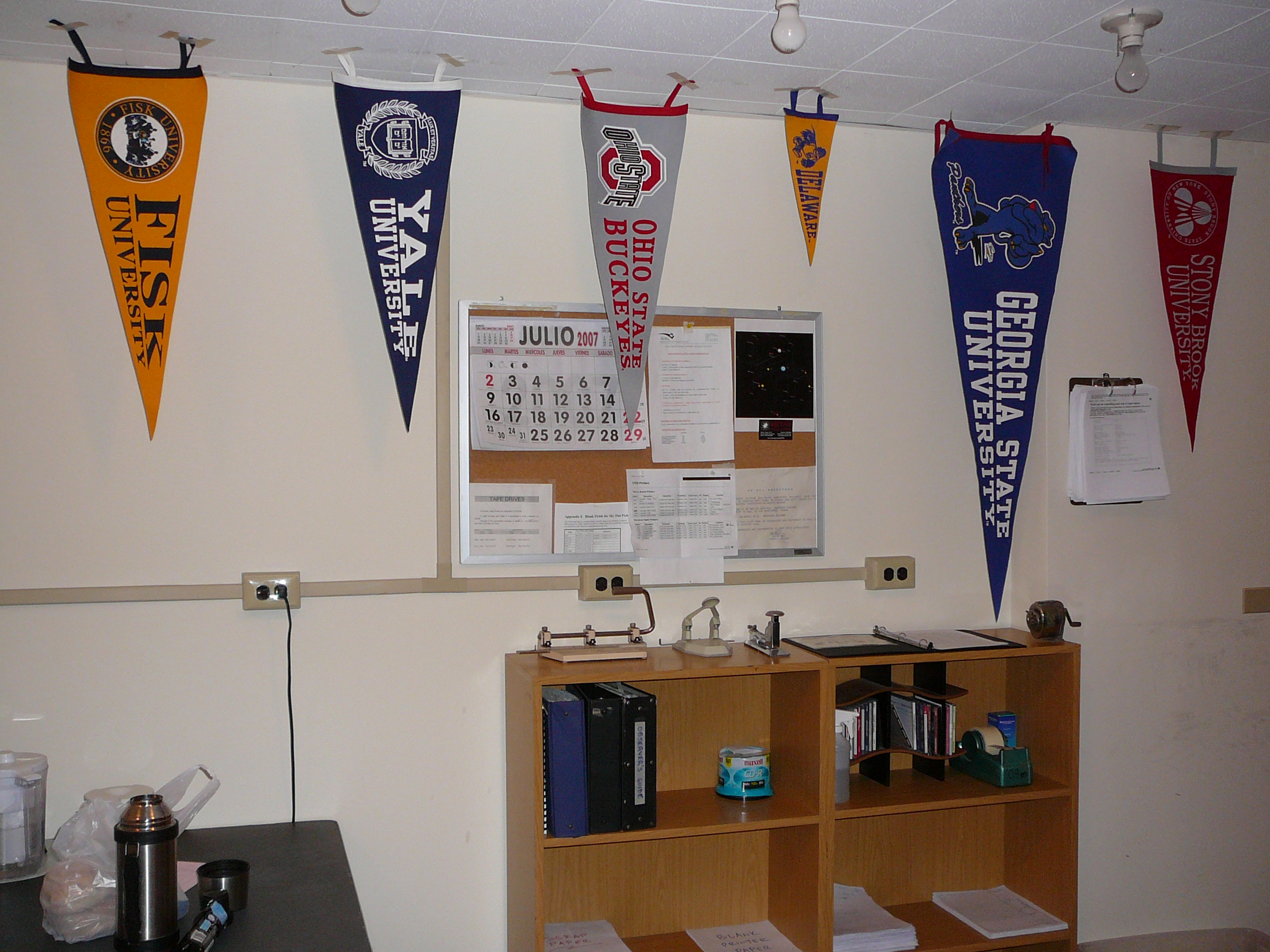
|
left: The 0.9m on the night of 15 December 2018, just under a comet and the Pleiades (R. Hinojosa). right: A few days later, a suspicious object landed to the north of the dome ...
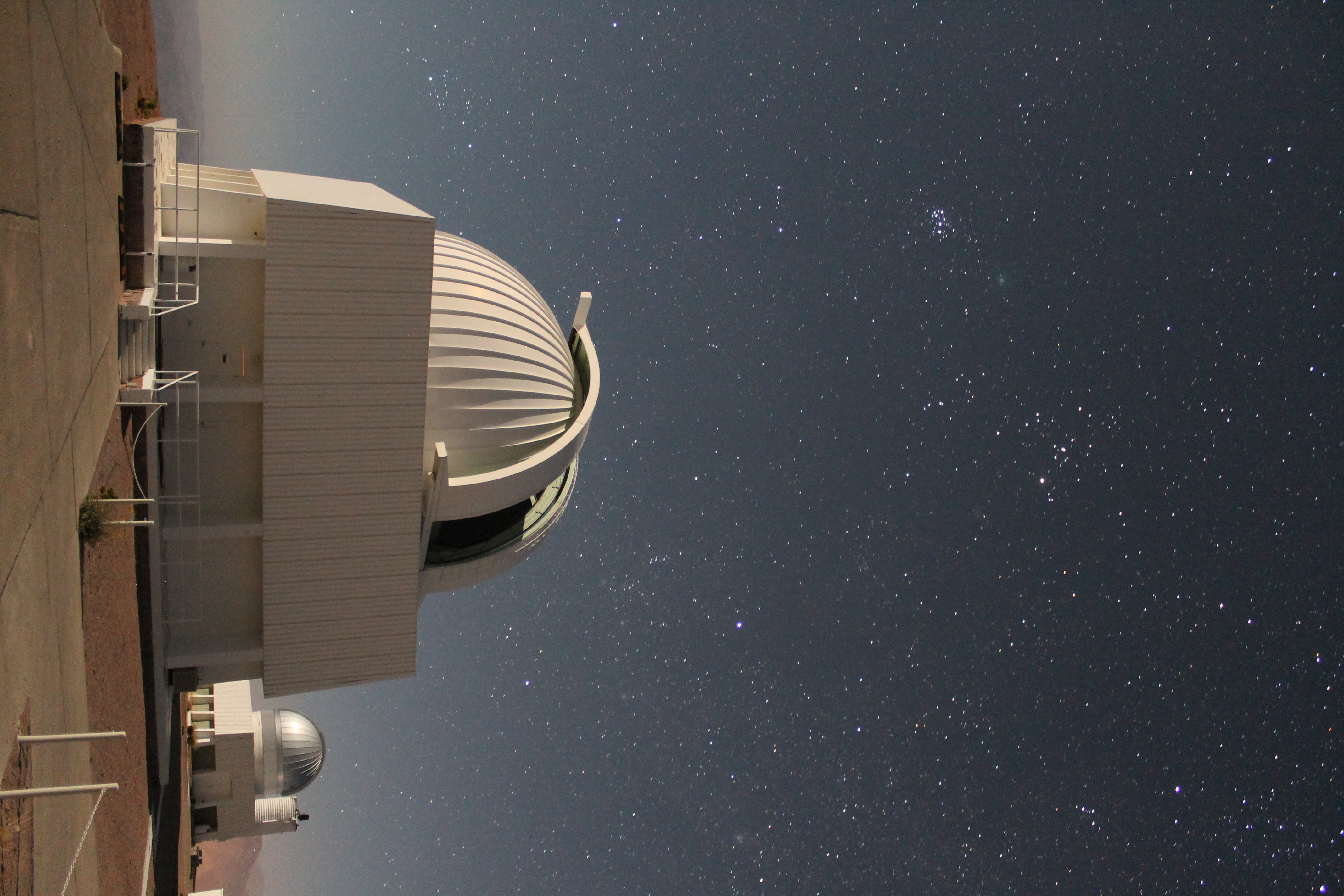
|
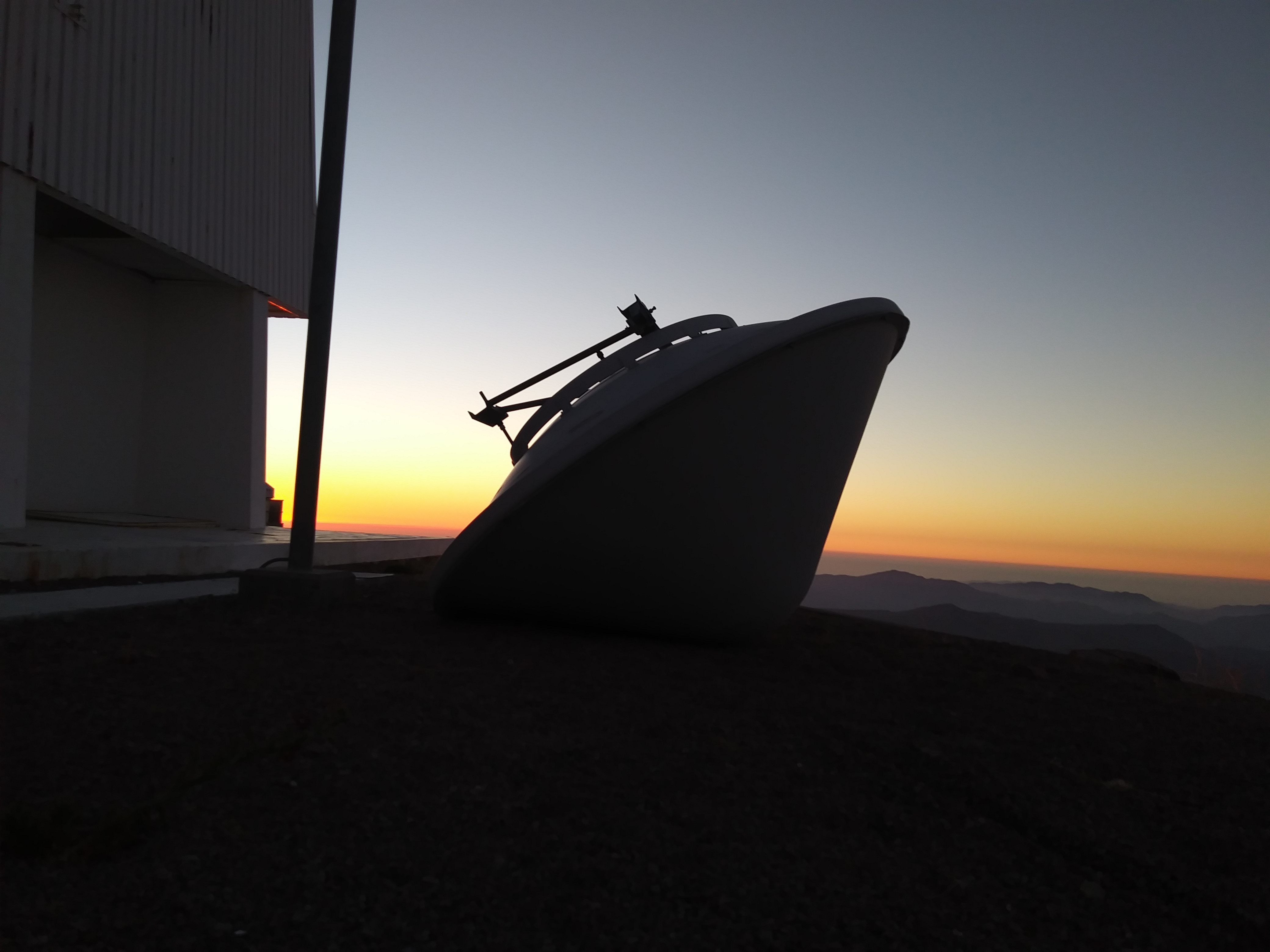
|
last updated 23 APR 2019